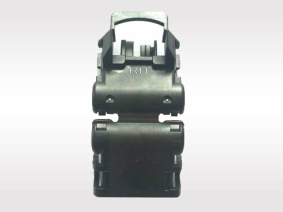Maintenance method:
(1) Die loose: the movement of punch or die exceeds the unilateral clearance. Adjust the combination clearance.
(2) Die tilt: die or die straightness is not straight, or there are foreign bodies between the templates, so that the template can not be flat. Reassemble or grind to correct.
(3) Template deformation: the hardness or thickness of the template is not enough, or it is impacted and deformed by external force. Replace the new template or correct the disassembly method.
(4) Die base deformation: die base thickness is not enough or uneven force, guide pillar, guide sleeve straightness variation. Grind and correct or refill plastic steel or replace mold base or make the force average.
(5) Interference of stamping die: whether the size and position of die are correct, whether the positioning of upper and lower die has deviation, whether it will be loose after assembly, the accuracy of punch is not good, and the die holder is not correct.
(6) Punching shear deflection: the punch strength is not enough, the big and small punches are too close, the lateral force is not balanced, and the punching is half inclined. Strengthen the guiding and protection function of stripping inclined plate, or increase the punch, shorten the small punch, increase the heel and heel length, support and guide in advance, and pay attention to the feeding length.
Mold damage
(1) Heat treatment: quenching temperature is too high or not enough, tempering times, temperature and time are not appropriate, quenching method time is not grasped; after using for a period of time, the problem appears.
(2) Stamping stacking: the sheet overlaps and continues to press, usually due to the rupture of the stripper.
(3) Waste blocking: the blanking hole is not drilled or the size does not match or falls on the bed table and is not cleaned in time, the punch and lower template are damaged more.
(4) Punch drop: not fully fixed or suspended, or the screw is too thin, the strength is not good, or the punch is broken.
(5) Hole escape: punch pressing plate escape hole size or depth is not enough, punch and stripper escape part is usually stripper damage.
(6) Foreign matter entering: the products blow out and bounce back, die parts collapse and fall, screws protruding from the die surface or other items into the mold, which may damage the lower die, stripper or punch, guide pillar.
(7) Assembly error: damage due to wrong position and direction of parts.
(8) Spring factor: insufficient or broken spring force or unequal height of equal height sleeve makes stripping plate inclined, or spring configuration is not frequent, resulting in overlapping punching damage parts.
(9) Improper stamping: damage caused by too low adjustment of working height, oil loss of guide pillar, misfeeding or half blanking of strip, damage of peripheral equipment such as feeding, discharging and receiving machines, failure to install or open air pipe, abnormal punching machine, etc.
(10) Improper maintenance: the above-mentioned points are caused by the replacement but not replaced or the screws are not locked or restored according to the original state.
Size variation
(1) Knife edge wear: too large head or size (cutting shape); smaller (punching); poor flatness. Regrind or replace die.
(2) No guide: the guide pin or other positioning device does not work, the feeder is not relaxed or the guide pin diameter is not correct, so the guide can not be corrected. The positioning block is worn and the feeding distance is too long.
(3) Die too short: bending increased, chamfering is not enough, forming is not complete.
(4) Insufficient escape hole: crushed, covered or deformed. Clean the escape hole or increase the escape hole and depth.
(5) Insufficient ejection: feeding is not smooth, strip bending, poor stripping, upper die pulling, lengthening ejection.
(6) Improper ejection: the ejector pin is not properly prepared, the spring force is not appropriate or the ejection is too long. Adjust the elastic force or change the position or the number of pins; grind the pins to short fit.
(7) Poor guide material: the length of the guide plate is not long or the gap between the guide material is too large, or the die and the discharging machine are inclined, or the distance between the mold and the feeder is too long.
(8) Blanking deformation: some bending parts can not be allowed to overlap, so they must be dropped every time, or the dished strain can be overcome by pressure pad or shear.
(9) Bending deformation: the material is extruded at the upper bend; the near hole is deformed under tension, and the force is uneven; the bending ridge is inclined and the punch is not long enough.
(10) Punching deformation: the material is distorted unevenly, the size increases or the eccentricity is asymmetric.
(11) Impact deformation: the air pressure of the product blowing out is too strong or the gravity falls down to impact deformation.
(12) Floating chip extrusion: Scrap floating or fine scraps left on the die surface or foreign matter extrusion variation.
(13) Improper material: material width or plate thickness, material or material hardness is not appropriate, also can produce bad.
(14) Poor design: the project arrangement is not good, the gap setting is not good, unless the design is changed, it is difficult to overcome.






